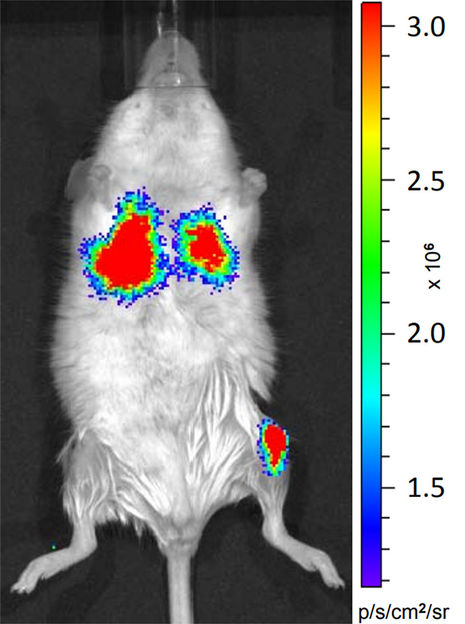How does the brain in schizophrenia work?
The brain of people suffering from schizophrenia works differently than those of healthy subjects – but how? Looking for the mechanism behind these differences, researcher from the Central Institute of Mental Health (CIMH) in Mannheim and the University of Philadelphia use brain scans to find new answers to this question.
Schizophrenia is a severe and often chronic disease that affects the entire brain. Newer studies indicate a prominent role of the neurotransmitter Glutamate, but the neurobiological pathways through which alterations in glutamatergic signaling lead to the observed disturbances in thought, mood and cognition remains poorly understood.
Researchers from the working group Systems Neuroscience (Head: Dr. Dr. Heike Tost) part of the Department of Psychiatry and Psychotherapy (Medical Director: Professor Meyer-Lindenberg) and the University of Philadelphia now revealed a possible mechanism, how a blockade of glutamatergic signaling at the synaptic level can affect the integrity of the entire brain activity network.
By studying how brain regions of either healthy subjects or schizophrenia patients talk to each other while performing a memory task, they can show that the brains of schizophrenia patients form less stable networks. Interestingly, relatives of schizophrenia patients that were not affected by the illness but shared half of their genes, showed a stability of brain networks that was intermediate between patients and healthy controls, suggesting that genes influence the stability of brain networks.
“This is in line with our understanding of the genetic risk architecture of schizophrenia, which converges on genes involved in glutamatergic neurotransmission” says Heike Tost, senior author of the study, “and increases our confidence that less stable brain networks are at the core of the disease and not a mere epiphenomena of, for example, the medication.”
While finding less stable brain networks that are under genetic control is highly interesting per se, the authors of the study did not stop there, but dug deeper into the molecular underpinnings of network stability. To prove that glutamatergic neurotransmission is indeed central to maintaining network stability, the authors used pharmacological functional brain imaging in healthy subject. By administrating dextrometorphan (DXM), a known safe and potent inhibitor of glutamatergic signal transmission, to healthy subject while those again were performing a working memory task in the fMRI scanner, the researcher could show a decrease in network stability after DXM in comparison to a placebo.
“This is a really exciting study”, Urs Braun, the author summarizes, “as it tracks alteration on the brain network level to its roots on the molecular and cellular level. Tracking cross-level interactions among networks will also help to develop new approaches for therapeutic interventions.”
Professor Meyer-Lindenberg adds: ”A key motivation of our research is understanding the disruptions of dynamics of neuronal networks as they occur in psychiatric diseases. This study is significant contribution to understand the more proximal glutamatergic mechanisms of altered neural network dynamics and therefore might help in identifying a useful system-level target to study the effects of novel and established antipsychotic treatments”
Original publication
Other news from the department science

Get the life science industry in your inbox
By submitting this form you agree that LUMITOS AG will send you the newsletter(s) selected above by email. Your data will not be passed on to third parties. Your data will be stored and processed in accordance with our data protection regulations. LUMITOS may contact you by email for the purpose of advertising or market and opinion surveys. You can revoke your consent at any time without giving reasons to LUMITOS AG, Ernst-Augustin-Str. 2, 12489 Berlin, Germany or by e-mail at revoke@lumitos.com with effect for the future. In addition, each email contains a link to unsubscribe from the corresponding newsletter.
Most read news
More news from our other portals
Last viewed contents
Myoclonus
Luteinizing_hormone/choriogonadotropin_receptor
How the immune system identifies invading bacteria
Aschelminth

Epigenetic program leading to vessel differentiation
German_Cancer_Research_Center

Study finds mushroom enzyme effective in combating hepatitis C - White mushroom enzyme has antiviral action against the hepatitis C virus and inhibits its multiplication
Brodmann_area_23
New 'control knobs' for stem cells identified - Tufts study shows that changes in membrane voltage control timing of differentiation in adult stem cells
Qigong
Amphetamine






















































